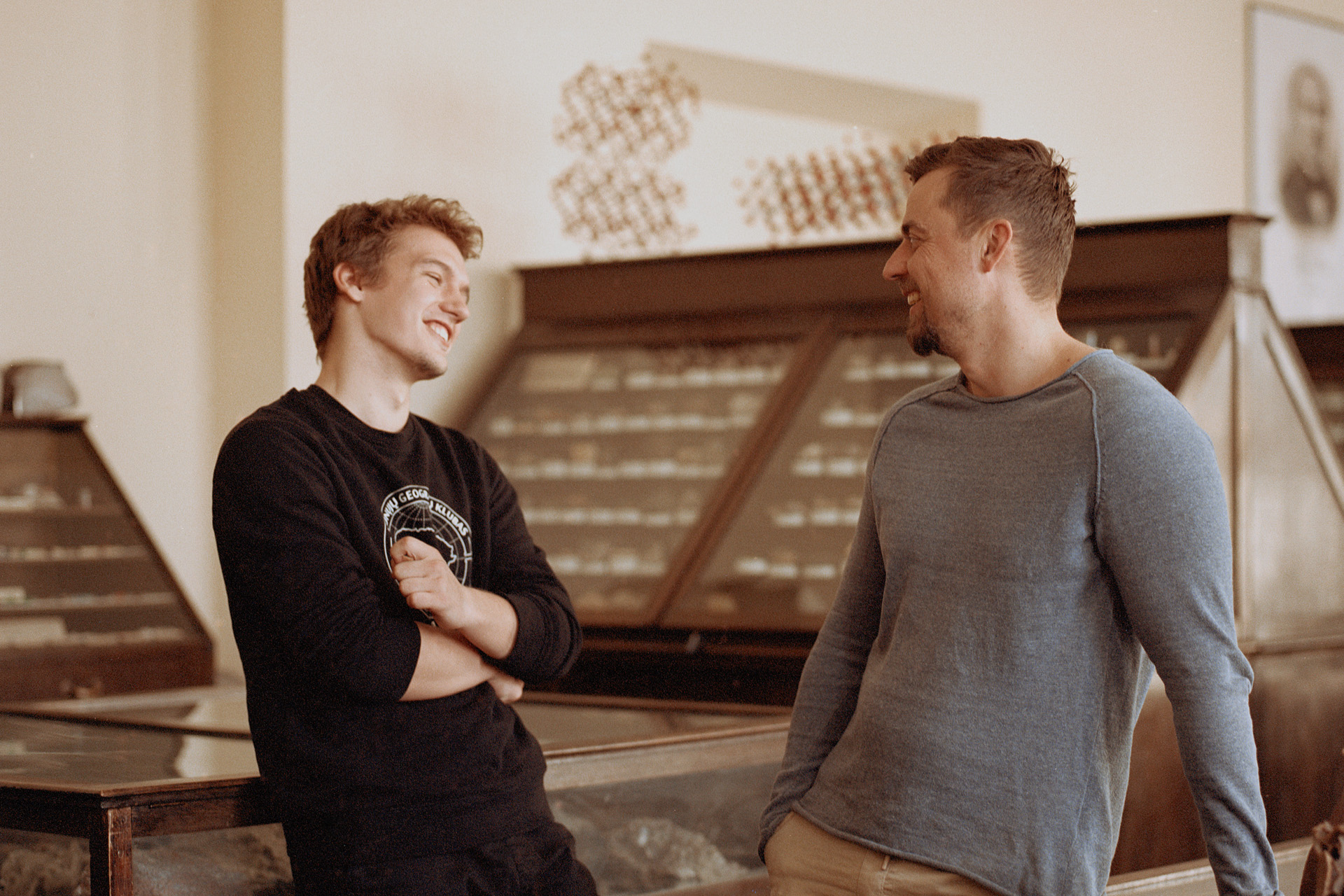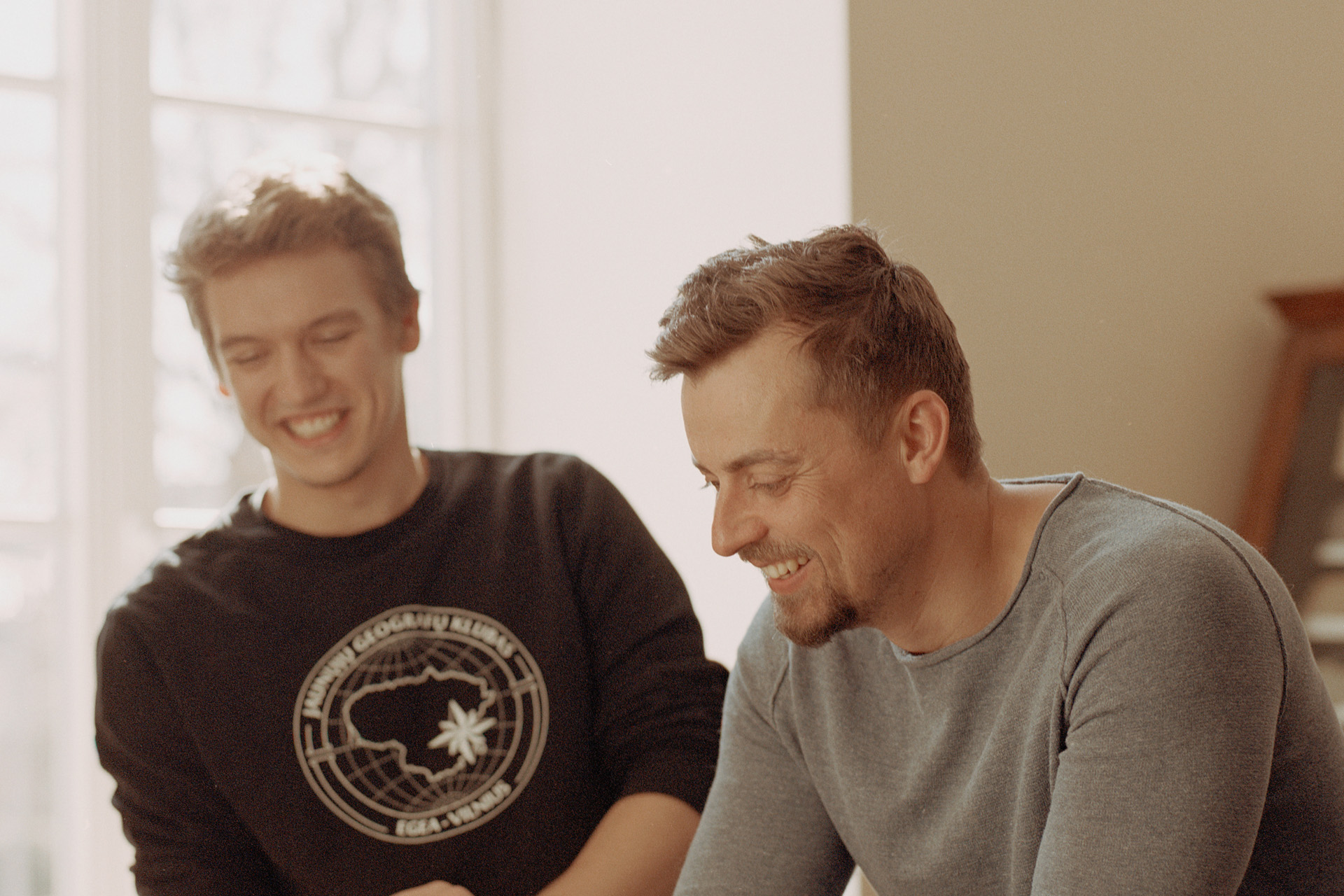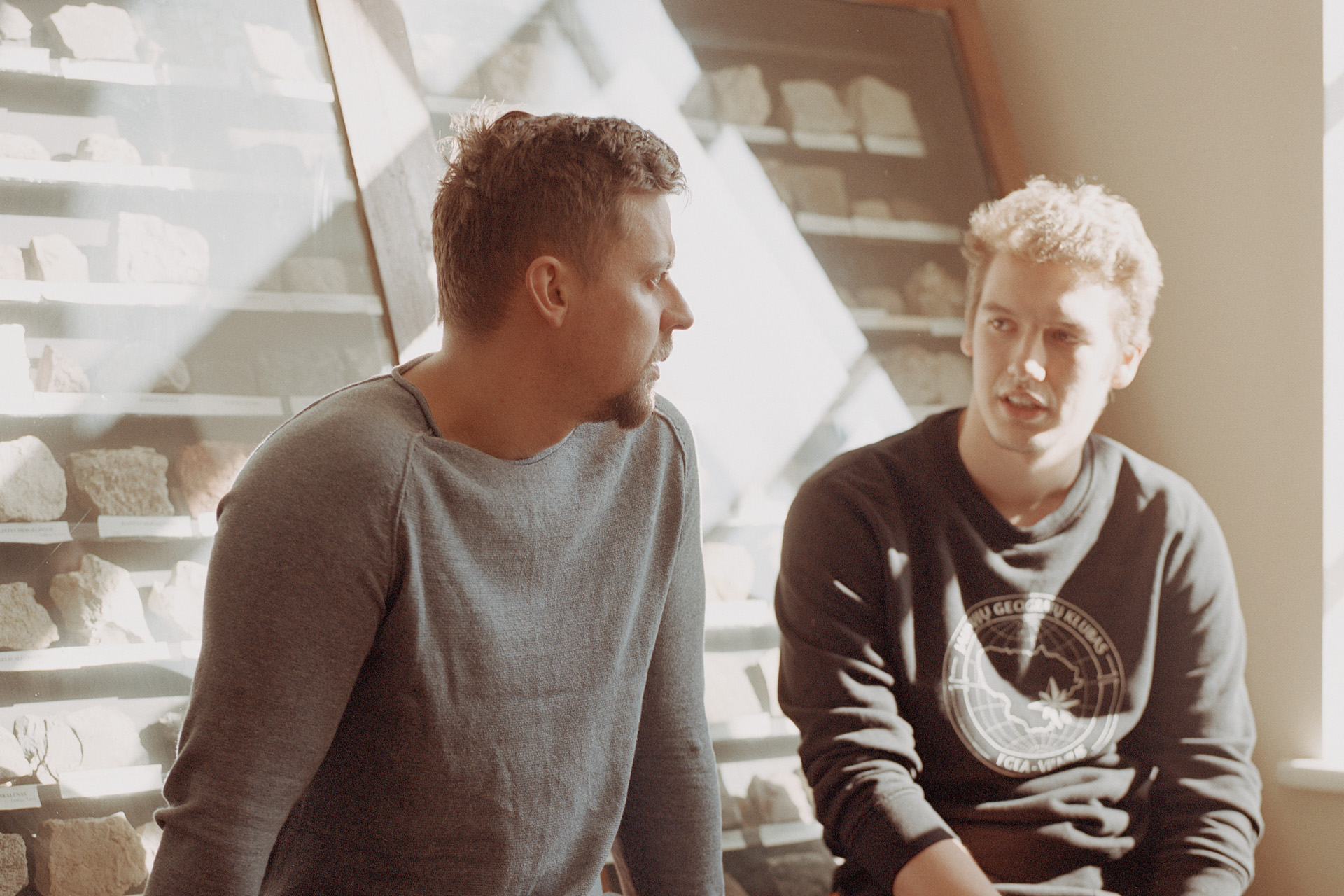Behind the Scenes of Geography Studies – Travel, Leaky Ceilings and Smuggled Goods from Belarus
Geography often sounds like a romantic subject, with uncharted lands, distant horizons and exotic countries. But what do the representatives of this profession really do, and what are the parts of those trips that not everyone gets to see? Dr Laurynas Jukna, a teacher in the Department of Geography and Landscape Management at the Institute of Geosciences of Vilnius University, and Kristupas Vėta, a third-year geography student, both said that studies and leisure are closely intertwined in the work of a geographer: “Where else can you work, get the paid and enjoy yourself that much...?”
often sounds like a romantic subject, with uncharted lands, distant horizons and exotic countries. But what do the representatives of this profession really do, and what are the parts of those trips that not everyone gets to see? Dr Laurynas Jukna, a teacher in the Department of Geography and Landscape Management at the Institute of Geosciences of Vilnius University, and Kristupas Vėta, a third-year geography student, both said that studies and leisure are closely intertwined in the work of a geographer: “Where else can you work, get the paid and enjoy yourself that much...?”
We met with Dr Laurynas Jukna and student Kristupas Vėta at the Institute of Geosciences, in an office where Dr Jukna works with his colleagues. Both are constantly on the move, as in addition to their studies and work, they have lots of plans. Geography is often associated with travel, so not many people know what a geographer actually does. The application of geographic knowledge is much broader than what we learn at school, ranging from environmental activities, to spatial planning, to working with 3D digital data. However, K. Vėta and Dr Jukna do confirmed the stereotype that regular adventures and travel are an integral part of a geographer’s daily life.
K. Vėta and Dr Jukna started their friendship during a practical training course in Balsiai in the Šiauliai Region. This was just one of the few stops they visited as geography majors.
Vėta has just returned from Latvia. During his studies he was employed at Trenkturas, where he travelled extensively to develop new hiking routes and helped to organise group hikes. Dr Jukna joked that it should be called Failturas: “Kristupas is writing a paper with me. Or rather, he should be writing it, but he’s always off in the woods somewhere.”
Dr Jukna’s students mostly work on remote, satellite-based research. He smiled, “Kristupas will definitely complete the paper, as there’s plenty of time until June.” K. Vėta laughed, “At work, nobody believes I will, because whoever starts working stops studying.”
When asked whether work interfered with his studies (or is it the studies that interfere with his work?), K. Vėta laughed, but finally answered seriously that his studies and work complement each other.
“I always used to enjoy visiting my grandmothers’ villages to see the natural environment, and I would travel around Lithuania a lot with my parents when I was younger. It all came together, so I am now studying geography and also working with hiking. I started doing private hikes back in 2020, but the pandemic put a damper on that. Now, I apply what I learn to my hiking activities; for example, I share a lot of environmental and geomorphological information.”
Dr Jukna’s fast pace of life is similar: the day before the photo shoot, he called from the coast to say that it had to be cancelled. As it happened, the weather was perfect for him to go out on a boat on the Baltic Sea for his research. He and a team of scientists are studying the changes and processes occurring in the seabed, on a submerged part of the coastline. It involves the shallow part of the coastline, where the waves crash onto the land. This research is crucial to understanding what is happening on the coast and what changes are in store for our beaches.
“The story goes like this: you sit down to work, and you have a bunch of activities planned. Then you get a phone call saying that two models are showing that tomorrow’s wind will be coming from the East. If three models confirm this, that will be great, we can go out on the boat. And so it happens, and that afternoon you get in your car and leave. And you go out on the boat. Everyone thinks travelling on the sea is romantic. But it is cold! You’re bobbing about on the boat for about 8 hours, the wind is blowing, and you get tangled in the fishermen’s nets. The water temperature is about 3 degrees. We travel about 1 km from the coast, and we have certain points where we need to take measurements. From Nida all the way to Smiltynė, we follow the coastline and know how far to go based on the coordinates – our mark is about 8 m deep, which is around 1-1.5 km from the coast. It takes an hour just to reach one point and back, and we have 17 such points,” said Dr Jukna, discussing his team’s research.

“It sometimes happens that the engine dies while we’re underway. The reason could be that we didn’t keep an eye on something and ran out of fuel, etc. It may seem like just a kilometre rowing back, but the current in the Baltic Sea is strong – so it still takes up to an hour and a half to reach the shore. However, you do get warm that way,” laughed the scientist.
Dr Jukna and K. Vėta have more in common than their profession as geographers. Most geographers fit the stereotype of always being on the move and never staying still. However, the strongest friendships are built during field training, when students and teachers go into the wild for around a month to explore, learn, map the area and live together.
“Every year, we go to different places for our practical training. This year, for example, we will go to Puvočiai. We always go somewhere far away from Vilnius, so we typically rent a small school and live there. Last year we were in Balsiai, near Šiauliai, and there was a children’s camp nearby. There were 300-400 children milling around, and we only had one modular house – the kind that used to be built a few decades ago. The children were playing volleyball, basketball and had dance events, so we also acted as caretakers and took part in archery activities with them,” said Dr L. Jukna.
K. Vėta added: “My work is similar now. When we go on group hikes, we also try the local activities. At the quarries that we visited during our training, we had a Trenkturas hike planned in the summer. When we were working, we used to go up the quarry stairs in cars and we could mark the tracks there. When we were driving, we could see that there were a lot of holes in the track. We decided that maybe we should change the route after all. Then, the next day we learned that explosions were being carried out in the area! That’s all part of the job: one part is drawing up the route, while the other part is checking its suitability. So I go along each route, where I might sit by a river or a small lake and draw – that’s my workplace. Recently, I was in Latvia, and we spent one night on a cliff by the river Gauja. Where else can you work, get paid and enjoy yourself that much...?”
Dr Jukna remarked: “If only you were studying as well...”
According to Dr Jukna, such “wild” training is only available for students in their 2nd year of studies, “then the students start moving towards civilization – they can choose urban or rural areas, as well as doing socio-geographical research. I once did training with a fellow student in Šnipiškės – in those days, it was unclear whether it was an urban or a rural area. The old “Shanghai” hadn’t been burned down yet. Occasionally, someone would scream in the street, or someone would pour a bucket of a liquid under your feet as you were walking past their window. But in general, I’m not that interested in social matters. My interest lies in nature, and I explore it mainly through satellites and remote sensing.”
K. Vėta added: “I think of my role as reaching people through nature: when I work, such as when I ride through or draw routes, people tell me a lot of things and I hear a lot of stories.”
Both Dr Jukna and Vėta agree that geography is a very broad field, covering nature, social phenomena and culture. However, all geographers, without exception, have something in common and that is travel.
“We have a very active Young Geographers Club. I was a member myself, and the club is about 40 years old now. Everybody who was always travelling as well as geographers from abroad would come to visit us. Sometimes, the activities of the club depend on the inclinations of the members. During our studies, we came up with some very good ideas: once we persuaded our teacher Šilagalis, who used to practice long-distance running, to take us to the Fann Mountains. The Fanns are one of the small Himalayan offshoots in Tajikistan. So off we went. We continued on to Uzbekistan, and spent almost a month there,” said Dr Jukna.

“We once had a training course in Kabeliai – right on the Belarusian border. That year, we lived in a funeral home. They’re called parish homes, but let’s face it – we just pushed aside the table on which the coffin is usually placed and settled in. The owners said that if someone died, we would have to move out for half a day. Nonetheless, we all liked it and no one complained. One day we went into the woods with the students and found a box of smuggled cigarettes. First, the students started calculating how much it was worth, but then they acted in a very responsible way and called the border guards. The commander of the border post was very proud of us, and a few days later he invited us to come and see how they lived and worked, including the cynologists and those working in other specialities. He told the students how they find people hiding in the forest, showed them how they search for various things, how they catch smugglers, and led the students along some secret paths. We spent a whole month in that forest during our research, and the border guards were very happy, as there was a lot of activity in the forest and no smuggling took place,” said Dr Jukna.
K. Vėta also laughed: “There was a time when someone complained that the house we were staying in had rain coming through the roof, even though we were promised that everything would be new and tidy. So a man came in, pushed the bed aside and put a bucket under the leak.”
According to the colleagues, all such experiences are enriching – with each trip, they not only deepen their professional knowledge, but also see how people live in different regions and try out a lot of new things. Most importantly, they become a member of the same “wild” community that is always ready for another challenge, no matter the inconvenience.
In recognition of the importance of developing a relationship between teachers and students, and having the courage to ask questions, VU is presenting an art project and a virtual exhibition, in collaboration with the documentary and portrait photographer Tadas Kazakevičius. The exhibition features a series of portraits of Dr Laurynas Jukna and Kristupas Vėta, revealing their sincere relationship.